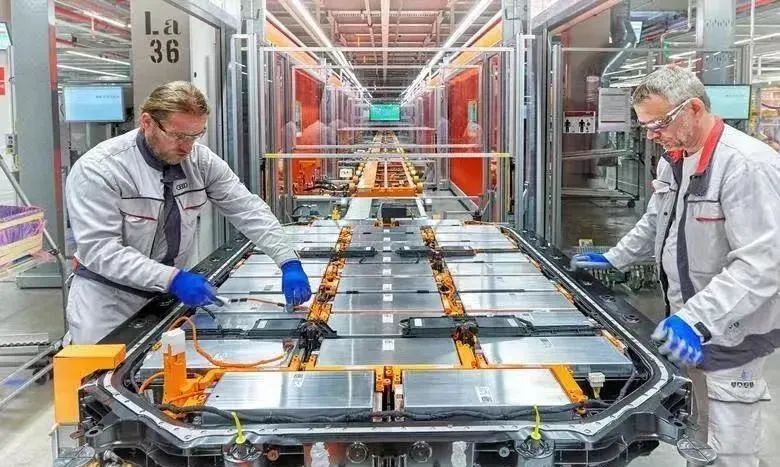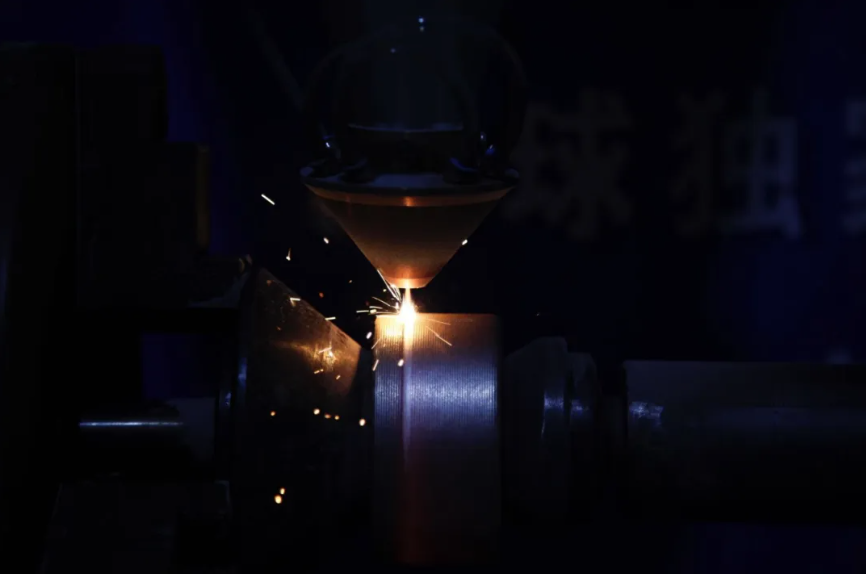Analysis of the application of annular spot and oscillating welding in the laser welding of aluminum casing of power battery
1.0 Material Description:
The aluminum battery case and battery cover commonly use material 1060 industrial aluminum, its main components are as follows:
The cover has raised edges, and a stepped structure, and is snapped into the aluminum case, with the edges resting on the top of the case wall to prevent laser light leakage from damaging the core.
Welding equipment:
Laser parameters: continuous laser 2kw fiber laser, fiber core diameter 100um, focused spot diameter 200um, system magnification 2 times.
2.0 Ordinary welding
Ordinary welding process parameters:
1. Laser power 1200W, speed 80mm\s, +2mm
2. Welding effect: the weld seam weld channel is neat and smooth, there is a regular fish scale pattern at the weld foot, and there is no extra high bulge on the side of the weld seam.
The molten pool is deep V-shaped with a girdle, with a depth of 1.7-1.8mm and a width of 1.4-1.5mm, which is a typical deep-melting laser weld.
CT flaw detection effect:
Generally, there are two kinds of bubble holes inside the weld:
1. Irregular process holes;
2. near-spherical metallurgical air holes:
It is analyzed that when the laser power density exceeds a certain threshold, the welding process will produce a small hole effect, the welding process
The unstable collapse of small holes in the process will form irregular process holes.
Ordinary welding effect:
The internal porosity volume rate of the whole weld is high, 4.1%~4.7% and the porosity rate is above 4%.
3.0 Ring Spot Welding
Ring spots not only have the role of preheating before welding to clean the welding area but also the role of post-welding cooling, the center of the spot power density, and the formation of a stable molten pool for welding.
Laser parameters: 6kw ring spot laser, fiber core 100um, the middle cladding 250um, 350um peripheral cladding.
Focusing point center spot size 0.3mm, shape spot size 0.8mm.
Process parameters:
Laser power: 1260W fiber core power +540W ring spot power, welding speed 80mm/s, defocus +2mm.
Welding effect: The ring spot welding weld surface is smoother and brighter, the weld surface and the side have no obvious residual height bulge, the weld depth of 1.6 ~ 1.7mm, melt width of 1.3 ~ 1.4mm.
CT probe results:
The annular spot can reduce both the spatter in the welding process and the porosity volume rate inside the weld, the porosity volume rate inside the weld is in the range of 0.15% to 0.5%, and the porosity rate is controlled within 1%.
4.0 Oscillating Welding
Laser process parameters:
Continuous laser 1400W, welding speed 65mm/s, defocus +2mm.
Welding results: Oscillating weld surface for the regular fish scale pattern, similar to the appearance of the weld pulse laser welding, the weld surface and the side of the weld are not obvious residual height of the bulge, the weld depth of 1.3 ~ 1.4mm, melt width of 1.6 ~ 1.7mm.
CT results:
Under suitable oscillation parameters, laser oscillation welding can completely eliminate the process holes inside the laser welding and significantly reduce the porosity inside the weld, with the porosity inside the weld ranging from 0.2% to 0.45%, and the porosity is also controlled within 1%.
Conclusion:
1. When ordinary fiber laser welding welds the shell of a lithium-ion power battery, there are both metallurgical porosity and process porosity inside the weld, and the porosity rate of the weld is as high as 4.5%.
2. Laser oscillation welding and ring spot welding can eliminate the process porosity inside the weld, and the porosity inside the weld is within 1%.
3. It is analyzed that laser oscillation welding and annular spot welding can greatly improve the quality of the weld, which is expected to become the mainstream technology of lithium-ion power battery welding in the future.







Comments
Post a Comment